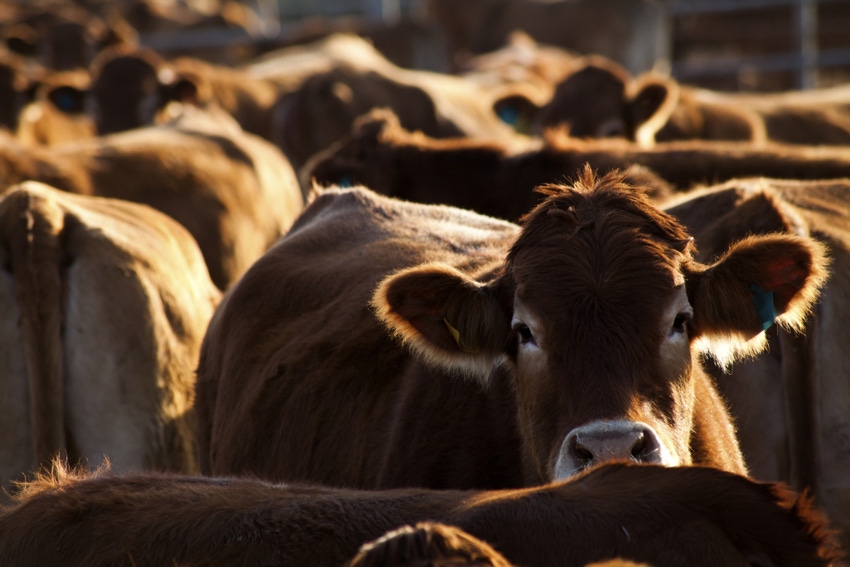Robust domestic beef demand, global shortage of beef continues to be primary drivers for U.S. market.

The latest Rabobank “Beef Quarterly Q3 2021” anticipates upward cost pressures for feed budgets, as weather and supply constraints are set to keep key feed grain prices high. In the second quarter, cattle prices in leading beef exporting countries continued to rise or remained stable, with Argentina and Canada being the notable exceptions. In those countries, Rabobank said there was a rather dramatic contraction in cattle prices, while Brazilian cattle prices took a break from an upward trend.
Argentina’s restrictions have global impact on trade
In June, the Argentine government implemented a system to restrict beef exports and raise the domestic beef supply. This measure came after a 30-day suspension of beef shipments in May. New quotas now limit Argentine beef exports to 50% of the average monthly volume exported from July to December 2020.
“As Argentina was the fifth-largest beef exporter in 2020 and the second-largest supplier to China, this cut in export volumes has the potential to significantly impact global beef trade,” explained Angus Gidley-Baird, senior analyst of Animal Protein at Rabobank.
The first deadline for review is at the end of August, with the possibility of an extension until December. Rabobank understands that the new export system is unlikely to end in August, although it is possible that some aspects of the restrictions could be eased, particularly exports to China and Israel – the biggest export markets.
Following the discussions between the production sector and the government – where producers demanded to allow kosher meat exports to Israel and shipments to China to resume from September onward – there was a new announcement. On August 16, the Argentine government said they would allow an additional quota of 3,500 metric tons per month to Israel.
“There are several possible scenarios when projecting Argentine beef exports. But what we believe is most likely to happen is that there will be a 50% reduction in export volumes, according to the respective month of the previous year, to all destinations, with the exception of sales to China – resumed in September – and quotas to identified countries, until December 2021. In this way, they would meet the main demands of the production sector and raise the availability of beef in the domestic market, dropping exports by only 9.5%, compared to 2020,” said Gidley-Baird.
Brazil, Uruguay to benefit
Limited exports from Argentina – mainly to China – are expected to favor neighboring markets such as Brazil and Uruguay, Raboank suggested. Brazilian beef exports to China improved significantly in June and July. Brazilian exports in June (82,000 metric tons) increased 22% compared to May, and in July they saw another increase of 11%, reaching 91,000 metric tons, the highest volume this year.
According to INAC, in 1H 2021, beef exports from Uruguay to Argentina reached around 1,400 metric tons, the highest level in the last ten years. Shipments from Uruguay to China also increased 45%, reaching around 146,000 metric tons, and volumes to Israel increased 83.6%, to 8,200 metric tons.
Although Argentina’s government was expected to publish an incentive plan for the production sector – to prevent short- and medium-term reductions in the herd and production – Rabobank believes, based on the analysis of previous situations, that production could fall by 4-5% this year.
Australia cattle prices push new records
According to Rabobank, Australian cattle prices continued to push to new record levels during July. Contributor factors included strong producer demand, lower livestock numbers, strong supermarket and export demand and a reluctance from slaughterhouses to decrease kill numbers due to labor concerns.
The report did note that female slaughter numbers for Queensland and NSW continue to track in the low 40% range, reflecting an ongoing herd rebuilding process.
U.S. outlook substantially improving
Robust domestic beef demand and a global shortage of beef continues to be the primary drivers for the U.S. market, Rabobank noted in the report. Adding fuel to this scenario is China and Southeast Asia’s aggressive buying amid limited global beef supply.
Meanwhile, liquidation of the U.S. cattle herd has accelerated, which Rabobank said is largely attributable to sever drought conditions in the West. The good news is the backlog of cattle both inside and outside of feedlots has finally cleared.
According to the report, the improving outlook is being reflected in the price producers are willing to pay for replacement cattle as well as deferred live cattle futures. Fed steer prices are currently 25% above last year and 8% above the five-year average for this time of year, Rabobank said.
As with many of the protein commodities right now, China imports continue to be watched. During the first half, Rabobank reported that the country’s imports reached 1.3 million metric tons, which is 14% higher year over year. Brazil continues to be the main supplier, but U.S. exports to China have increase eightfold compared to the same period last year. Rabobank expects that strong import momentum to persist through the second half of 2021 despite the ongoing COVID-19 pandemic.
About the Author(s)
You May Also Like



.png?width=300&auto=webp&quality=80&disable=upscale)

